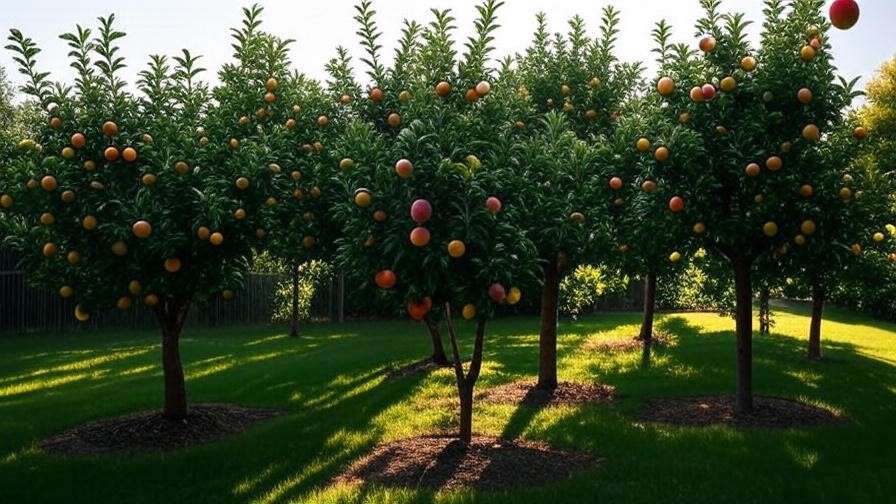Picture this: in just a couple of years, you’re plucking ripe, juicy peaches or crisp apples from your own backyard, savoring the fruits of your labor—literally! Fast growing fruit trees make this dream a reality, offering quick harvests, stunning blooms, and eco-friendly benefits for gardeners of all skill levels. Whether you’re a beginner or a seasoned grower, these trees deliver delicious results without decades of waiting. In this guide, we’ll explore the top 10 fast growing fruit trees, share expert planting tips, and help you create a thriving, sustainable orchard at home. With some varieties yielding fruit in as little as 2–3 years, your lush backyard harvest is closer than you think! 🍑
As a horticulturist with over 15 years of experience in tree care, I’ve seen firsthand how fast growing fruit trees transform gardens into productive, beautiful spaces. This article draws on that expertise, offering practical advice to help you choose, plant, and care for trees that suit your climate, space, and lifestyle. Let’s dive into the world of rapid-yielding orchards and discover how to make your backyard a fruit-filled paradise!
What Makes a Fruit Tree “Fast Growing”? 🌿
Defining Fast Growing Fruit Trees
A “fast growing” fruit tree typically produces a reliable harvest within 2–5 years of planting, unlike slower varieties that may take a decade or more. These trees are bred or selected for rapid growth, early fruiting, and adaptability to various climates. Growth rates depend on factors like tree variety, climate, and care, but the best fast growing fruit trees combine quick establishment with high-quality fruit production. For example, dwarf apple trees can bear fruit in as little as 2 years, while standard peaches may take 3–4 years.
Benefits of Fast Growing Fruit Trees
Why choose fast growing fruit trees? First, they deliver quick gratification for impatient gardeners eager to enjoy homegrown produce. Second, they’re cost-effective—growing your own fruit can save hundreds of dollars annually compared to store-bought options. Third, these trees enhance your yard’s ecosystem by sequestering carbon, providing shade, and attracting pollinators like bees and butterflies. According to the USDA, a single mature fruit tree can produce up to 100 pounds of fruit per season, making them a sustainable choice for eco-conscious gardeners. 🌍
Expert Insight: “Fast growing fruit trees are perfect for beginners because they reward your efforts quickly while teaching you the basics of tree care,” says Dr. Emily Carter, a certified arborist and professor of horticulture at Oregon State University.
Factors to Consider Before Choosing Fast Growing Fruit Trees 🧑🌾
Before selecting your trees, evaluate these key factors to ensure success:
Climate and Hardiness Zones
Your USDA Hardiness Zone determines which fruit trees will thrive in your region. For instance, citrus trees flourish in warm zones 9–11, while apples prefer cooler zones 4–8. Check your zone using the USDA’s interactive map to choose varieties suited to your climate. LSI keywords: USDA zones, climate suitability, regional gardening.
Space and Soil Requirements
Consider your available space and soil conditions. Dwarf fruit trees, ideal for small yards or containers, grow 6–10 feet tall, while standard trees may reach 20 feet or more. Most fruit trees prefer well-drained, loamy soil with a pH of 6.0–7.0. Test your soil with a home kit to confirm its suitability or amend it with compost for optimal growth.
Tip: If space is limited, opt for dwarf or semi-dwarf varieties to maximize your harvest without overcrowding.
Pollination Needs
Some fruit trees are self-pollinating, meaning they can produce fruit without a second tree (e.g., most peaches). Others, like many apples, require cross-pollination from a compatible variety nearby. Check pollination requirements before planting to ensure a bountiful yield. LSI keywords: self-pollinating trees, cross-pollination, fruit tree compatibility.
Maintenance and Care
Fast growing fruit trees vary in maintenance needs. Figs and mulberries are low-maintenance, thriving with minimal care, while cherries may require more attention to pest control. Plan for regular pruning, watering, and fertilizing to keep your trees healthy and productive.
Top 10 Fast Growing Fruit Trees for Your Backyard 🍑
Here’s our expert-curated list of the top 10 fast growing fruit trees, complete with growth timelines, care tips, and why they’re perfect for your backyard orchard.
1. Peach Tree (Prunus persica)
- Growth Rate: Fruits in 2–4 years.
- Best Climates: Zones 5–9.
- Care Tips: Plant in full sun with well-drained soil. Prune annually to maintain an open canopy and boost fruit production. Watch for peach leaf curl, a common fungal issue, and treat with organic fungicides if needed.
- Why It’s Great: Peaches offer juicy, sweet fruit and stunning pink spring blossoms, doubling as ornamental trees. Varieties like ‘Redhaven’ are beginner-friendly and reliable.
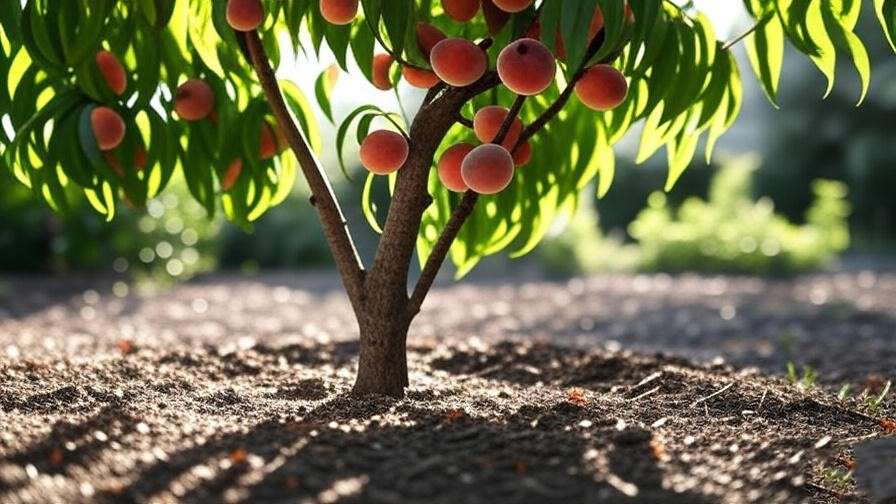
2. Fig Tree (Ficus carica)
- Growth Rate: Fruits in 1–3 years.
- Best Climates: Zones 7–10.
- Care Tips: Figs thrive in full sun and tolerate drought once established. They’re adaptable to various soils but prefer a pH of 6.0–6.5. Minimal pruning is needed—focus on removing dead wood.
- Why It’s Great: Figs are low-maintenance and produce sweet, versatile fruit perfect for fresh eating, drying, or baking. ‘Brown Turkey’ is a popular, hardy variety.
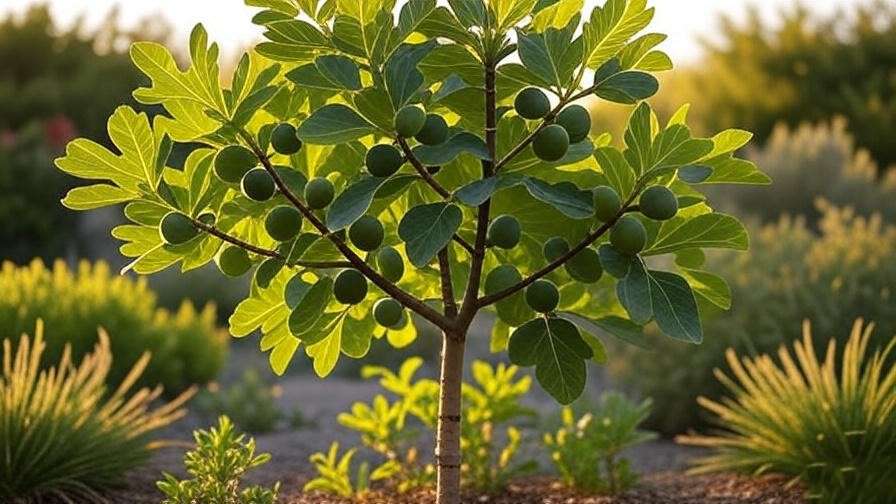
3. Dwarf Apple Tree (Malus domestica)
- Growth Rate: Fruits in 2–3 years.
- Best Climates: Zones 4–8.
- Care Tips: Choose self-pollinating varieties like ‘Gala’ or plant a compatible pollinator nearby. Ensure 6–8 hours of sun and fertilize in spring with a balanced 10-10-10 fertilizer.
- Why It’s Great: Dwarf apples are compact, making them ideal for small spaces or containers. They yield crisp, delicious fruit perfect for snacking or pies.
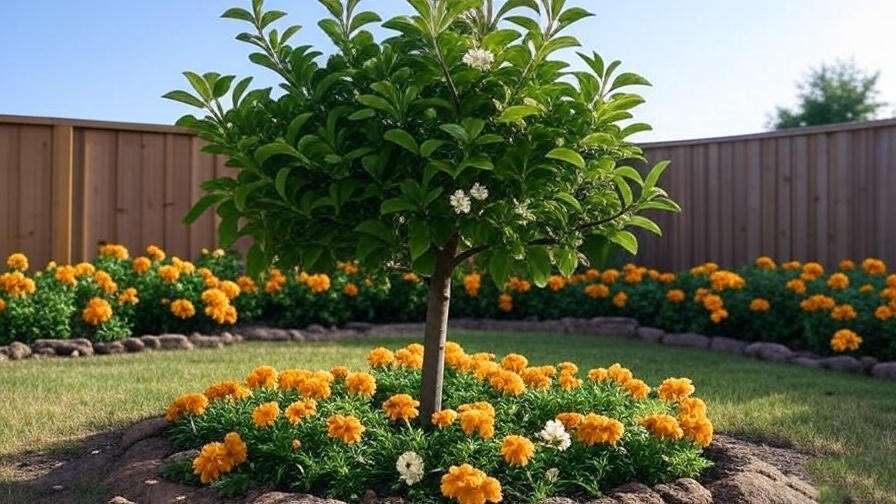
4. Plum Tree (Prunus domestica)
- Growth Rate: Fruits in 3–5 years.
- Best Climates: Zones 4–9.
- Care Tips: Plant in well-drained soil and prune to maintain shape. Watch for pests like plum curculio and use organic traps if needed.
- Why It’s Great: Plums offer sweet, juicy fruit and add ornamental value with their spring blooms. ‘Santa Rosa’ is a fast-growing, self-pollinating favorite.
5. Citrus Trees (Citrus spp.)
- Growth Rate: Fruits in 2–4 years (e.g., Meyer lemon).
- Best Climates: Zones 9–11.
- Care Tips: Grow in containers in colder climates to bring indoors during winter. Provide full sun and well-drained, slightly acidic soil. Protect from frost.
- Why It’s Great: Citrus trees like lemons and oranges provide year-round fruit in warm climates and add a tropical vibe to your garden.
6. Mulberry Tree (Morus spp.)
- Growth Rate: Fruits in 2–3 years.
- Best Climates: Zones 5–9.
- Care Tips: Mulberries are hardy and tolerate poor soil conditions. Plant in full sun and water regularly during the first year. Minimal pruning is needed, but trim to control size if desired.
- Why It’s Great: Mulberries produce abundant, sweet berries perfect for jams, desserts, or fresh eating. They also provide excellent shade, making them a dual-purpose tree. ‘Dwarf Everbearing’ is a great choice for smaller yards.
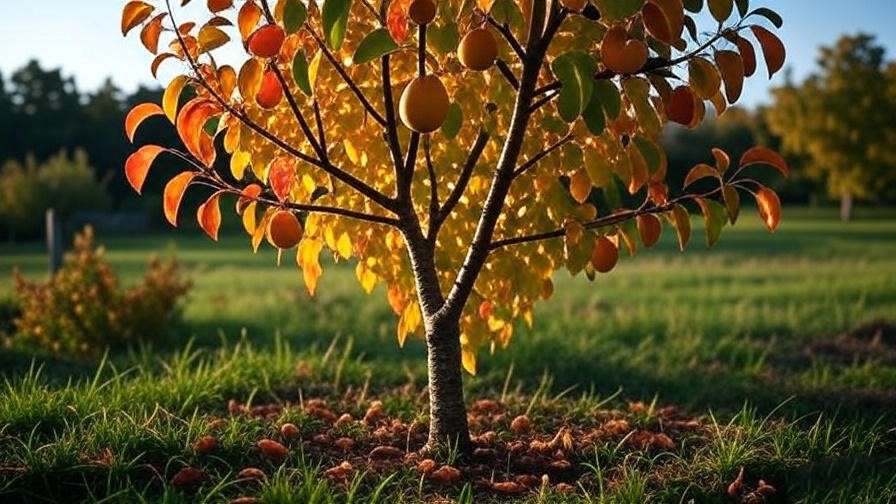
7. Pear Tree (Pyrus communis)
- Growth Rate: Fruits in 3–5 years.
- Best Climates: Zones 4–8.
- Care Tips: Plant in full sun with well-drained soil. Some varieties, like ‘Bartlett,’ are partially self-pollinating, but planting a second variety boosts yields. Fertilize annually and prune to promote airflow.
- Why It’s Great: Pears offer juicy, long-lasting fruit and are relatively disease-resistant. Their elegant shape and fall foliage add aesthetic appeal.
8. Apricot Tree (Prunus armeniaca)
- Growth Rate: Fruits in 2–4 years.
- Best Climates: Zones 5–8.
- Care Tips: Apricots need full sun and well-drained soil. Thin fruit in early summer to encourage larger, healthier yields. Protect from late frosts, which can damage blossoms.
- Why It’s Great: Apricots deliver sweet, tangy fruit ideal for fresh eating, drying, or baking. ‘Moorpark’ is a fast-growing, reliable variety.
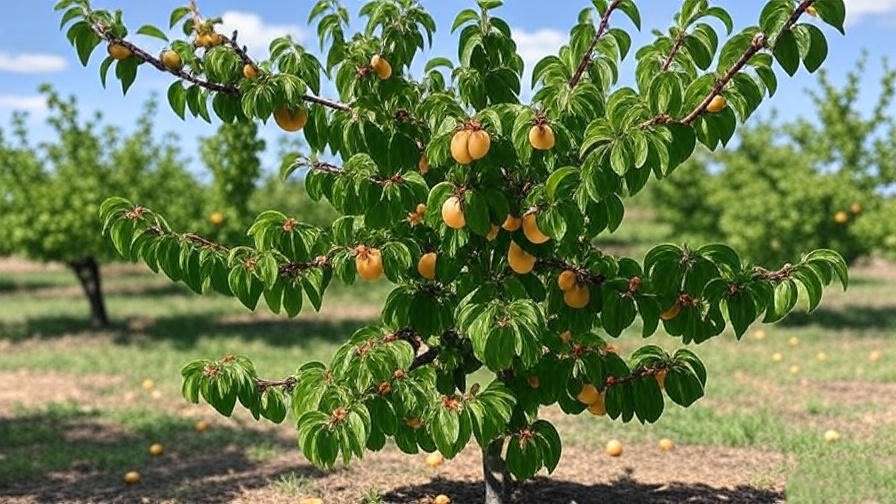
9. Cherry Tree (Prunus avium)
- Growth Rate: Fruits in 3–5 years.
- Best Climates: Zones 5–7.
- Care Tips: Plant in well-drained soil and protect fruit from birds using netting. Prune to maintain an open canopy. Self-pollinating varieties like ‘Stella’ are ideal for small gardens.
- Why It’s Great: Cherries provide delicious fruit and stunning spring blooms, doubling as ornamental trees. Their vibrant fruit is perfect for pies or snacking.
10. Persimmon Tree (Diospyros kaki)
- Growth Rate: Fruits in 3–5 years.
- Best Climates: Zones 7–10.
- Care Tips: Persimmons thrive in full sun and tolerate heat well. Minimal pruning is required—focus on removing dead or crowded branches. Ensure moderate watering during establishment.
- Why It’s Great: Persimmons offer a unique, sweet flavor and vibrant orange fruit that shines in fall. ‘Fuyu’ is a non-astringent, beginner-friendly variety.
Planting and Care Tips for Fast Growing Fruit Trees 🌞
To ensure your fruit trees thrive, follow these expert-backed planting and care strategies.
Choosing the Right Location
Most fruit trees need 6–8 hours of direct sunlight daily to produce abundant fruit. Avoid low-lying areas where frost can settle, as this may damage blossoms or young fruit. Check for good air circulation to reduce fungal risks. LSI keywords: fruit tree placement, sunlight requirements, frost pockets.
Planting Best Practices
- Timing: Plant in early spring or fall for optimal root establishment.
- Digging: Create a hole twice as wide and as deep as the root ball.
- Soil Prep: Amend soil with compost or organic matter to improve drainage and fertility.
- Planting: Place the tree so the root collar sits just above soil level. Backfill, water thoroughly, and stake if needed to stabilize.
Tip: Mulch around the base with wood chips or straw to retain moisture and suppress weeds.
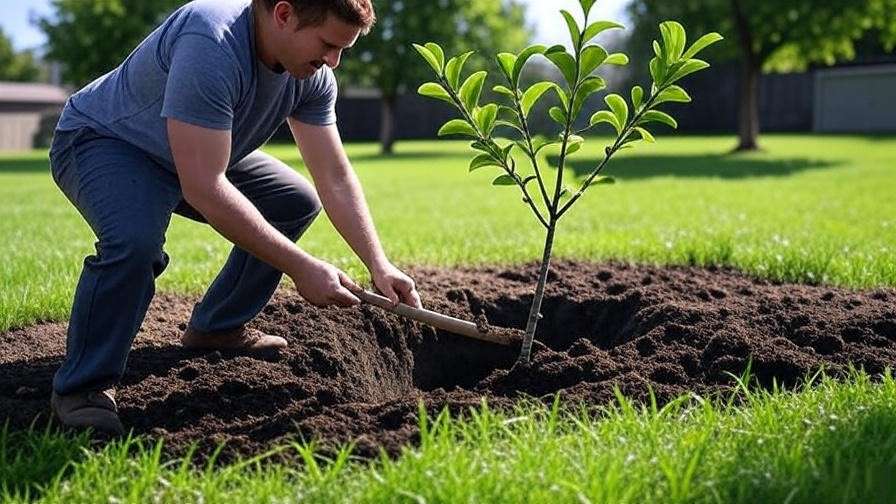
Watering and Fertilizing
Water deeply but infrequently to encourage deep root growth—about 1–2 inches per week during the growing season. Use a balanced fertilizer (e.g., 10-10-10) in early spring to boost growth. Avoid over-fertilizing, which can lead to excessive foliage at the expense of fruit.
Pruning for Maximum Yield
Prune during dormancy (late winter or early spring) to shape trees and promote fruit production. Remove suckers, dead wood, and crossing branches to improve airflow and light penetration. For example, peach trees benefit from an open-center shape, while apples thrive with a central-leader structure. LSI keywords: fruit tree pruning, canopy management, yield optimization.
Pest and Disease Management
Common pests include aphids, fruit flies, and plum curculio, while fungal diseases like peach leaf curl or powdery mildew can affect yields. Use organic solutions like neem oil, insecticidal soap, or companion planting with marigolds to deter pests. Regularly inspect trees and remove affected leaves or fruit to prevent spread.
Maximizing Your Harvest: Pro Tips from Experts 🌟
Companion Planting for Fruit Trees
Boost your trees’ health by planting pollinator-friendly companions like lavender, marigolds, or clover nearby. These attract bees and beneficial insects, improving pollination and reducing pest issues. For example, planting garlic near peach trees can deter aphids naturally.
Seasonal Care Checklist
- Spring: Fertilize, prune, and monitor for pests. Plant new trees.
- Summer: Water consistently, thin fruit to improve size, and check for diseases.
- Fall: Harvest fruit, clean up fallen leaves, and apply mulch for winter protection.
- Winter: Protect young trees from frost with burlap wraps or frost cloths in colder zones.
Expert Quote: “Consistency is key in fruit tree care. Regular monitoring and small adjustments—like proper pruning or timely watering—can double your harvest,” says Dr. John Thompson, a certified arborist with 20 years of experience in fruit tree cultivation.
Common Mistakes to Avoid When Growing Fruit Trees 🚫
- Overwatering: Soggy soil leads to root rot. Ensure proper drainage.
- Wrong Climate: Planting a tropical citrus tree in a cold zone spells failure. Match trees to your hardiness zone.
- Ignoring Pollination: Failing to plant a pollinator for cross-pollinating varieties reduces yields.
- Skipping Pruning: Unpruned trees become overcrowded, reducing fruit quality.
Tip: Keep a gardening journal to track planting dates, pruning schedules, and tree health for better results year after year.
FAQs About Fast Growing Fruit Trees ❓
Q1: How soon can I expect fruit from fast growing trees?
Answer: Most fast growing fruit trees produce within 2–5 years, depending on the variety, climate, and care. Figs and dwarf apples are among the quickest, often fruiting in 1–3 years.
Q2: Can I grow fruit trees in small spaces or containers?
Answer: Yes! Dwarf varieties like apples, citrus, or figs are perfect for patios or small yards. Use large containers with drainage holes and high-quality potting mix.
Q3: What’s the easiest fast growing fruit tree for beginners?
Answer: Fig and dwarf apple trees are low-maintenance and forgiving, making them ideal for novice gardeners.
Q4: How do I protect my trees from pests naturally?
Answer: Use neem oil, introduce ladybugs for aphid control, or install bird netting for cherries. Companion planting with pest-repelling herbs also helps.
Q5: Do fast growing fruit trees require a lot of upkeep?
Answer: Many, like figs and mulberries, are low-maintenance with proper planning. Regular pruning and pest checks keep upkeep manageable.
Conclusion: Start Your Fruit Tree Journey Today! 🍒
Fast growing fruit trees are your ticket to a thriving backyard orchard, offering quick harvests, stunning aesthetics, and eco-friendly benefits. From juicy peaches to sweet figs, the top 10 trees in this guide provide options for every climate and space. By choosing the right varieties, planting strategically, and following expert care tips, you’ll enjoy a bountiful harvest in just a few years. Start today—pick 1–2 trees from this list, check your hardiness zone, and plant this season for a fruitful future.
Have a favorite fruit tree or a question about growing them? Share your thoughts in the comments or explore our other tree care guides for more tips! 🌳

